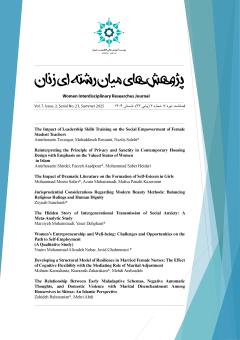-
-
-
Open Access Article
1 - Five major factors of personality and positive and negative perfectionism as predictor of symptoms of body dysmorphic disorder in adolescent girls
Niloofar Shahidpoor Fatemeh Ajhdari Farzad Amiri -
Open Access Article
2 - The Mediating Role of Self-compassion in the Relationship Between Self-concept and Body Image and Social Anxiety in Female Students of Isfahan University of Technology
Behnoush Harouni hassan khoshakhlagh -
Open Access Article
3 - Comparison of the Five Dimensions of Personality, Body Image and Self-Esteem in Women Applying for Cosmetic Surgery and Non-Applicants
Nazanin Amin kazemi Hadi AkbariNejhad Parya Faroughi
List of Articles Body image
-
The rights to this website are owned by the Raimag Press Management System.
Copyright © 2017-2025


